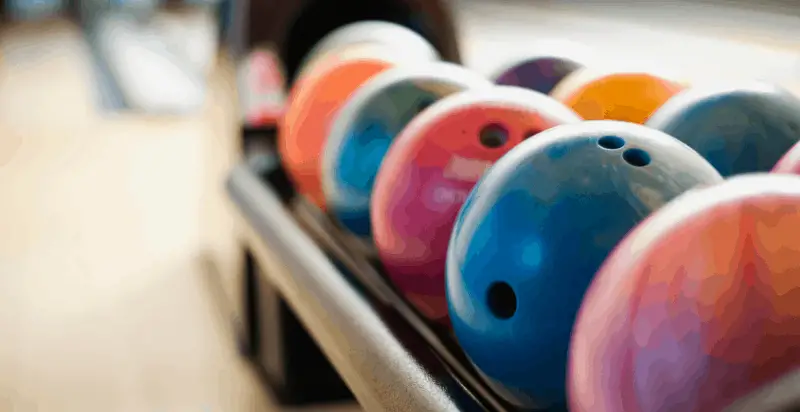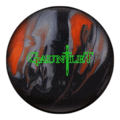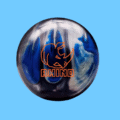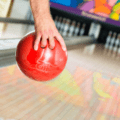Introduction
Are you in the market for a new bowling ball? Are you an utter bowling newbie worried about dislocating their shoulder with a ball that’s far too heavy? Or are you a pro bowler looking to upgrade to a pin-smashing buster ball?
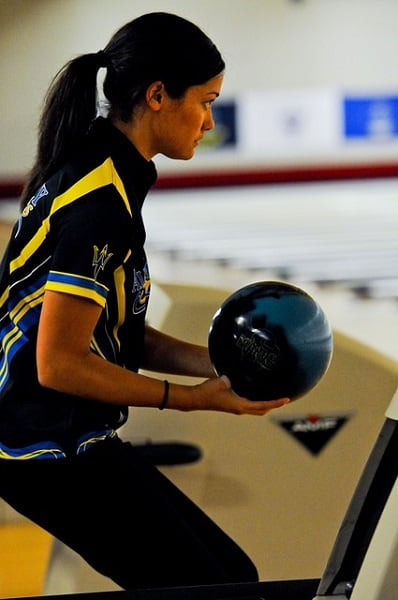
Well, it’s always tempting to buy a heavy bowling ball because someone in the other lane is scoring strike after strike with a 16lb-er, but you can risk injury by lobbing a ball that is far too heavy.
How do you determine which ball is the right weight for you? How does the size, age and weight of a bowler alter the type of bowling ball they should be using?
Below is a handy help guide that should show you the clear differences between a cruiser and a bruiser bowling ball, how ball weights will affect your strikes and whether you should choose to pile on the pounds.
What Is The Average Bowling Ball Weight?
An exact average is difficult to measure, as bowlers come in all different weights, shapes and ages. However, statistics that give us a rough average of which balls are used the most often by age, weight and gender.
Bowling balls start at 6lbs and go all the way up to 16lbs, which is the maximum legal weight.
According to the statistics, males who bowl on average of a few times a week will feel comfortable bowling an average of 13lbs to 16lbs, usually sticking to the 15lb mark.
Female bowlers who use the alley around the same frequency will choose somewhere in the region of 10lbs to 14lbs, usually going for the 14lb bowling ball, physical and medical variables notwithstanding.
The lightest bowling ball weight is 6lbs, and statistics have shown that children who bowl frequently use a bowling ball within the range of 6lbs to 12lbs.
However, these weights will vary based on upper body strength, pre-existing injuries, age and overall physical condition. So first you’ll have to judge the condition of yourself before the condition of the ball!
How Does Weight Affect How The Ball Is Bowled?
In general, the heavier the ball, the harder the pins get hit, although this does not guarantee you an actual strike, as a heavy ball will affect your accuracy!
When it comes to bowling, if you change one component, whether it is weight, force or co-ordination, then usually it will affect the other variables too.
Weight and speed are crucial factors in determining how many pins the ball will hit. But, the two factors actually affect each other when altered - the determining factor is you!
A heavier ball will strike the pins harder, but will require more force from you in order to get the ball to sufficient striking speed. More weight equals more force… resulting in greater strain and potentially more injury!
Weight will also determine the straightness of the throw. If you are throwing beyond your strength, the range of motion you have at the throw itself might be significantly decreased, leading you to gutterball after gutterball!
High-performance balls used by professional bowlers have performance enhancing cores that greatly reduce the weight of a bowling ball without sacrificing speed.
Urethane and resin bowling balls also results in a lighter bowling ball but without sacrificing any of the power.
But What Is The Correct Bowling Ball Weight For Me?
Testing the ball before playing is a crucial factor in determining how easy it will be for you to hit those pins without injuring yourself. If you’re struggling during the first few bowls, you might hit fatigue-point a lot quicker and your game will suffer as you keep playing.
Determine which weight of ball you can throw comfortably multiple times. If a 14lb ball is proving too much, drop one or two pounds and see how your range of motion increases.
A bowling ball that is way beyond your throwing capacity might also result in poor form, causing you to overcompensate, which will markedly decrease the accuracy of your shot, as well as resulting in injury.
Back, neck and muscle injury are very common in bowling when using the wrong weight for your size or upper body strength.
However, a lighter ball might all be detrimental to your throwing efficiency, not providing you with the proper resistance or force needed to get that much-coveted strike.
Experts recommend that if you feel excess muscle stress or fatigue after bowling three whole games, then you should switch to a lighter bowling ball. For example, if you find yourself getting tired with a 15lb ball, downgrade to a 13lb ball.
What weights do professional bowlers use?
Historically, bowlers have believed that the bigger the ball, the more powerful the punch.
However, this rule has changed in recent years. Bowlers originally used 16lb bowling balls, however, these days around 70% of male bowlers have used a lighter weight of around 15lbs on professional tournaments, with the remaining 30% using 16lb balls.
The average bowling ball weight of female professional bowlers ranges from around 13lbs to 15lbs.
Can I Make My Current Bowling Ball Heavier?
Most professional leagues prohibit exceeding any weight over 16lbs, and most pro bowling shops will refuse to add static weights to any ball, as it could disqualify it from the standards set by the United States Bowling Congress (USBC).
One USBC-approved way of increasing the weight is to drill a balance hole, which changes the ball’s force metrics and maximizes a bowler’s shot pattern.
The rules laid out by the USBC are strict, allowing for only one ounce of ‘side weight’ through the use of the balance hole.If you plan on using a balance hole, it is important that you check with league administrators before entering an officially-sanctioned bowling match, as any illegal weight additions could lead to disqualification.
To avoid penalties, it is recommended that a bowler enhance their shot through devices such as customized cores and coverstocks, which will add to the ball’s speed through resistance and momentum without tampering with the weight.
How Do I Shop For The Best Ball?
Pay close attention to the size of the finger holes when shopping for bowling balls. Holes that are too small or large means that the ball is probably too heavy or light for you - so try before you buy!
A bowler’s height and weight will determine the weight of the bowling ball. If you have any preexisting medical conditions, particularly the spine, on which a lot of strain is put when bowling, then you will probably want a lightweight ball.
For children, it is best to use the lightest bowling ball weight of 6lbs. This should also be the recommended weight for those with severe physical impairments.
For children there is also a general rule that the child’s age will correspond with the ideal weight for the bowling ball. If the child is 8, then an 8lb ball is best, if the child is 10, a 10lb ball is best, etc, etc.
The minimum legal weight for professional bowling balls is 12lbs, so if your child can wield a 12lb bowling ball then they can be bought a professional standard ball.
The maximum bowling ball weight at most bowling alleys is 16lbs, giving most bowlers a range of 10lbs to choose in most local alleys.
Another general rule for selecting the correct bowling ball weight for an adult is that the weight of the ball is roughly 10 percent of the person’s body weight. For example, if the bowler is 168lbs, then they should be using a 16lb ball. However, this does not take into account physical impairments.
However, as mentioned previously, the default for considering what weight of ball to use will be comfort. Do not overextend yourself when bowling, especially if you are only bowling for fun - you don’t want to hurt yourself!
Closing Thoughts
There are many facts and fictions when considering the ideal bowling ball weight, and as shown above, it is important to discern which is which.
Competitiveness and a macho attitude can contribute to selecting a bowling ball that might be completely unsuitable to your weight and physical strength, leading to significant injury if practiced over a long period of time.
Weight is not the bee-all and end-all when it comes to nabbing those strikes on the bowling alleys. Internal weighted cores, lightweight bowling ball materials such as carbon fiber and coverstocks all contribute to strike efficiency.
Consider whether you are a serious pro-bowler or someone who does it casually. If you are the latter, then it might be best to use a lighter ball - you don’t want to risk a serious injury for something you consider as only a bit of fun!
However, if you are a more serious-minded bowler looking to increase their strike count, you will have to offset the weight of the bowling ball with your levels of discomfort. Your bowling stamina will suffer if you’re overcompensating with a heavier ball!

I’m Lia and I love playing games. I started this site to share things with friends and they encouraged me to post more and now I’m trying to share things with the world – indoor and outdoor sports, and board and bar games. I write about things like Bocce, Croquet, Billiards, Darts and other fun ways to enjoy time with your friends and family!

